
La Sagrada Familia, an iconic symbol of Barcelona, is more than just a basilica; it is a testament to human creativity and ambition. Designed by the renowned architect Antoni Gaudí, this architectural masterpiece has been in construction since 1882, captivating millions with its intricate details and unique style.
In this article, we delve into The Fascinating Facts About La Sagrada Familia: Barcelona's Architectural Masterpiece, exploring the history, design, and significance of this remarkable structure. From its stunning facades to its soaring towers, La Sagrada Familia continues to inspire awe and admiration around the world.
The Intricate Design Elements of La Sagrada Familia
The intricate design elements of La Sagrada Familia reflect the profound connection between architecture and nature, a concept that Gaudí fervently embraced. Each aspect of the basilica's design is meticulously crafted to echo the organic forms found in the natural world. For instance, the columns are inspired by tree trunks, branching out at the top to support the ceiling like a forest canopy, creating a sense of harmony and tranquility within the space.
One of the most striking features of the basilica is its elaborate facades, each telling a different story from the life of Christ. The Nativity Facade, with its detailed carvings of flora and fauna, symbolizes the birth of Jesus, while the Passion Facade conveys the sorrow and sacrifice of his crucifixion. These facades are adorned with symbolic elements that invite visitors to reflect on deeper spiritual meanings.
Gaudí also integrated light as a crucial element in his design, strategically placing stained glass windows to create a mesmerizing play of color throughout the interior. The vibrant hues of the glass transform the sunlight into a kaleidoscope of colors, enhancing the overall atmosphere of the basilica. This intentional use of light not only illuminates the space but also evokes an emotional response, aligning with Gaudí's vision of a divine experience.
Furthermore, the basilica features an extraordinary combination of geometric shapes and forms, which contribute to its uniqueness. Gaudí's use of hyperboloids, helicoids, and parabolas in the design of the towers and arches exemplifies his innovative approach. To illustrate this diversity, the following table showcases the primary geometric forms utilized in La Sagrada Familia's architecture:
| Geometric Form | Purpose |
|---|---|
| Hyperboloid | Creates structural stability and aesthetic beauty in towers |
| Helicoid | Enhances the fluidity of the design, resembling natural forms |
| Parabola | Supports arches, allowing for expansive interior spaces |
Exploring the Symbolism Behind La Sagrada Familia's Architecture
The architecture of La Sagrada Familia is rich with symbolism, reflecting Gaudí's deep religious beliefs and his desire to convey spiritual truths. For instance, the basilica's three grand facades represent different aspects of Christ's life: the Nativity, the Passion, and the Glory. Each facade serves as a visual parable, inviting visitors to contemplate the divine narrative through intricate sculpture and design.
In addition to the facades, Gaudí infused numerology into the structure, believing that numbers hold sacred meaning. The number 12 is prominent, symbolizing the apostles, with 12 towers planned to honor them. This intentional use of numerical symbolism emphasizes the connection between the architectural design and spiritual teachings, enhancing the overall experience for visitors.
The interior of La Sagrada Familia also embodies a profound spiritual journey. The design of the columns resembles a forest, creating an immersive environment that encourages reflection and serenity. As visitors walk through the space, they are not only surrounded by art but also guided through a metaphorical passage that represents a journey from the earthly to the divine.
Lastly, the incorporation of natural light is a powerful symbol of divine presence. The stained glass windows are not just decorative but are also designed to filter sunlight in a way that changes throughout the day, symbolizing the passage of time and the idea of spiritual awakening. This dynamic quality of light within La Sagrada Familia serves as a reminder of the transient nature of life and the eternal hope within faith.
A Journey Through History: The Construction Timeline of La Sagrada Familia
The construction of La Sagrada Familia began in 1882, with architect Francisco de Paula del Villar as the original designer. However, the project took a pivotal turn in 1883 when Antoni Gaudí took over, infusing his unique vision into the design. His approach not only altered the architectural landscape of the basilica but also set a foundation for a journey that would span over a century.
Over the years, several milestones have marked the progress of La Sagrada Familia's construction. Key dates include:
- 1882: Groundbreaking ceremony.
- 1883: Gaudí becomes the chief architect.
- 1926: Gaudí's tragic death, leaving the project incomplete.
- 2026: Anticipated completion, coinciding with Gaudí's centenary.
The project has faced numerous challenges, including funding issues, the Spanish Civil War, and the complexities of Gaudí's intricate designs. Despite these obstacles, the dedication to preserving and continuing Gaudí's vision has driven the construction forward, making it a symbol of resilience in architectural history.
Today, La Sagrada Familia stands as a testament to innovation and creativity, blending various architectural styles, including Gothic and Art Nouveau. The combination of artistry and engineering within its construction timeline reflects the ongoing commitment to honoring Gaudí's legacy while bringing his dream closer to reality.
The Influence of Antoni Gaudí on Modern Architecture
Antoni Gaudí's influence on modern architecture is profound and far-reaching. His organic approach, characterized by the integration of natural forms and structural innovation, has inspired countless architects to embrace creativity over conventionality. By challenging traditional architectural principles, Gaudí emphasized the importance of harmony with nature, paving the way for the development of contemporary styles that prioritize sustainability and environmental awareness.
His use of unique materials and techniques, such as the incorporation of ceramics and wrought iron, prompted a shift in how architects approach design and construction. Gaudí's willingness to experiment with form and structure has encouraged a generation of architects to explore new possibilities. His visionary ideas about integrating art into architecture have also led to the rise of movements like Art Nouveau and Biomimicry, which seek inspiration from the natural world.
Furthermore, Gaudí's emphasis on symbolism has sparked a renewed interest in the narrative quality of architecture. His ability to convey complex spiritual and cultural stories through design invites architects to consider the deeper meanings behind their creations. This emphasis on storytelling in architecture has led to innovative designs that resonate with their surroundings and communities.
In summary, Antoni Gaudí's groundbreaking contributions to architecture not only transformed the landscape of Barcelona but also left an enduring legacy on the global architectural scene. His visionary ideas continue to inspire architects to push boundaries, embrace creativity, and create structures that are not only functional but also profoundly meaningful.
Visitor Experience: What to Expect at La Sagrada Familia
Visiting La Sagrada Familia is an enchanting experience that begins even before you step inside. As you approach the basilica, the stunning facades capture your attention, each one radiating a unique story told through its intricate details. Expect to encounter a blend of Gothic and Art Nouveau styles, with towering spires and ornate sculptures that invite exploration. The sheer scale of the basilica is breathtaking, setting the tone for a memorable visit.
Once inside, visitors are greeted by a spectacular interior that feels both otherworldly and serene. The play of light through the stained glass windows creates a mesmerizing atmosphere, filled with vibrant colors that shift throughout the day. As you wander through the columns resembling tree trunks, you may feel as though you are walking through a mystical forest, designed to evoke tranquility and reflection. This immersive experience allows you to connect deeply with Gaudí's vision.
To enhance your visit, consider purchasing an audio guide or joining a guided tour. These options provide invaluable insights into the basilica's history, architecture, and the symbolism embedded in its design. You may also want to explore specific highlights, such as:
- The breathtaking Nativity Facade, celebrating the birth of Christ.
- The evocative Passion Facade, illustrating the sorrow of the crucifixion.
- The stunning interior with its vibrant stained glass, creating a unique play of light.
Finally, be prepared for a unique visitor experience that includes a chance to ascend one of the towers for panoramic views of Barcelona. This exhilarating opportunity offers a different perspective of the city and the basilica itself, allowing you to appreciate Gaudí's masterpiece from new heights. Overall, a visit to La Sagrada Familia promises to be an unforgettable journey filled with artistic wonder and spiritual reflection.
The Significance of La Sagrada Familia in Barcelona's Cultural Landscape
La Sagrada Familia holds a prominent place in Barcelona's cultural landscape, symbolizing not only the city’s architectural heritage but also its deep-rooted spiritual and artistic traditions. This basilica is a magnet for tourists and art enthusiasts alike, drawing millions each year. It serves as a reminder of Barcelona's commitment to art and creativity, showcasing how architecture can transcend time and resonate with diverse audiences.
The significance of La Sagrada Familia extends beyond its staggering dimensions and intricate designs. It stands as a cultural icon, representing the collective identity of the Catalan people. The basilica has become a source of inspiration for local artists, musicians, and writers, further enriching the city's cultural fabric. Many cultural events, including concerts and exhibitions, are hosted in its vicinity, fostering a vibrant artistic community.
Moreover, La Sagrada Familia plays a pivotal role in promoting Barcelona's tourism industry. It is often featured in travel itineraries and is regarded as a hallmark of the city’s architectural innovation. The basilica not only highlights Antoni Gaudí's genius but also emphasizes the influence of Catalan Modernism, making it a focal point for discussions on cultural heritage and preservation.
Finally, the ongoing construction of La Sagrada Familia reflects a blend of tradition and modernity, symbolizing the city's resilience and dedication to honoring Gaudí’s vision. As the completion date approaches, the basilica continues to be a living testament to Barcelona's rich history and its ongoing evolution, serving as a bridge between past and future.
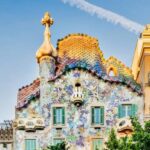 Popular ticket options for Casa Batlló in Barcelona, Spain
Popular ticket options for Casa Batlló in Barcelona, Spain Bernat family owns and maintains Casa Batlló
Bernat family owns and maintains Casa BatllóIf you want to know other articles similar to The Fascinating Facts About La Sagrada Familia: Barcelona's Architectural Masterpiece you can visit the category WHERE YOU CAN GO.
Leave a Reply


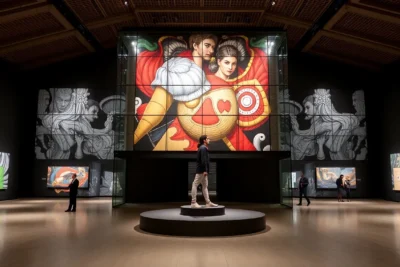
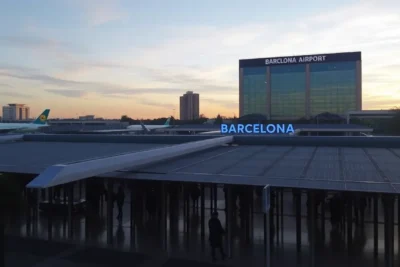

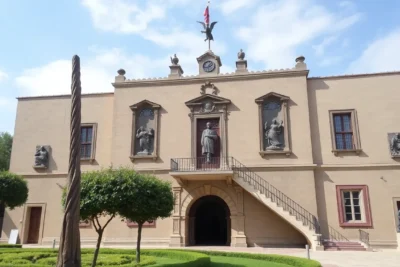

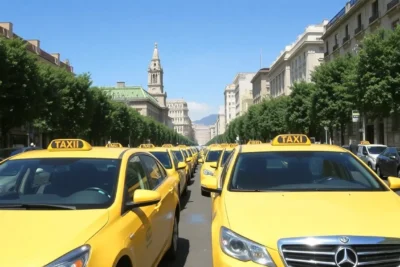
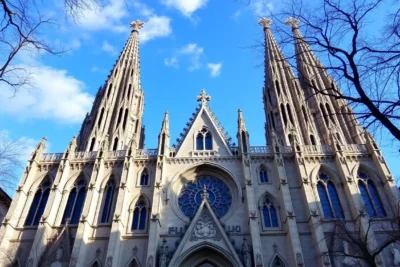

Read more!